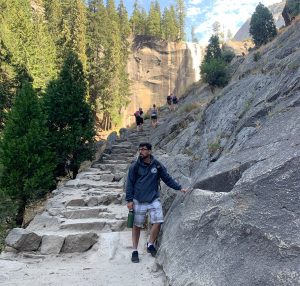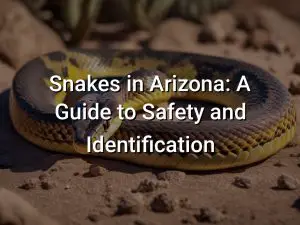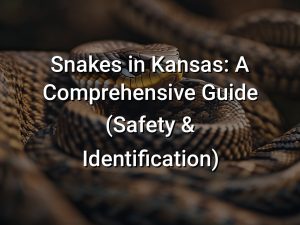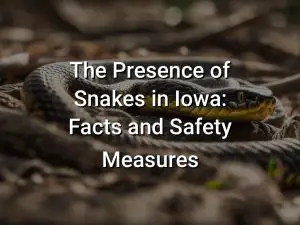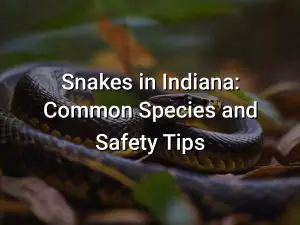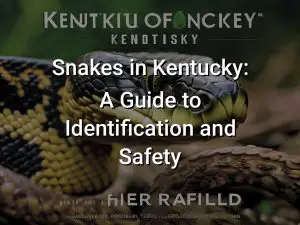Snakes in California: What You Need to Know (Safety & Information)
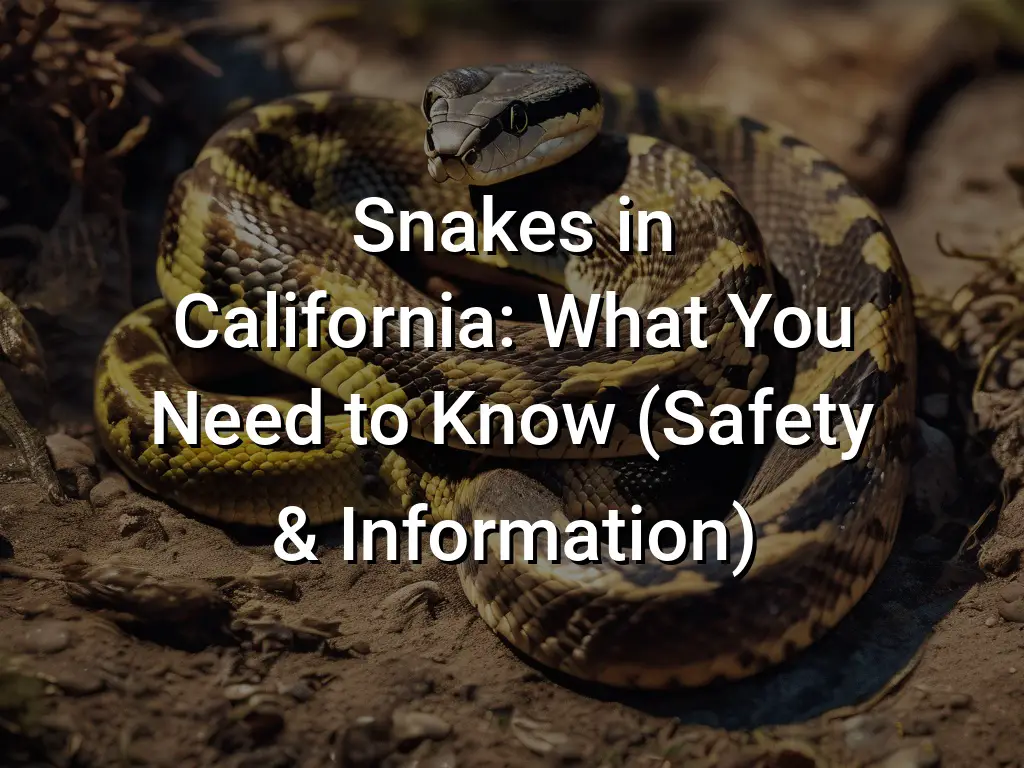
California, the Golden State, is home to a wide variety of snakes, each with their own unique characteristics and behaviors. Whether you’re a snake enthusiast or simply curious about the reptiles that inhabit the state, it’s important to understand the types of snakes you may encounter and how to stay safe.
In this article, we’ll provide you with all the information you need to know about snakes in California. From the venomous snakes that require caution and awareness to the non-venomous snakes that play important roles in the ecosystem, we’ll cover everything from their habitat and behavior to snakebite prevention and snake removal. So grab your snake boots and let’s dive into the world of snakes in California!
Quick Links
Types of Snakes
California is home to a diverse range of snake species, with over 50 different types found throughout the state. Here are some of the most common types of snakes you may encounter:
- Gopher Snakes: Non-venomous snakes known for their excellent burrowing abilities. They are often mistaken for rattlesnakes due to their similar appearance.
- Rattlesnakes: Venomous snakes with a distinctive rattle at the end of their tail. There are several species of rattlesnakes in California, including the Western Diamondback and the Northern Pacific.
- Garter Snakes: Non-venomous snakes that are commonly found near water sources. They have long, slender bodies and are known for their bright colors and striped patterns.
- Kingsnakes: Non-venomous snakes that are known for their ability to eat other snakes. They have vibrant banding patterns and are often found in wooded areas.
- Corn Snakes: Non-venomous snakes that are popular as pets. They have a docile temperament and come in a variety of colors and patterns.
These are just a few examples of the snakes you may encounter in California. It’s important to remember that while some snakes are venomous, most snakes in the state are harmless and play a vital role in maintaining the ecosystem.
Venomous Snakes
California is home to several species of venomous snakes, including the Western Diamondback Rattlesnake, the Southern Pacific Rattlesnake, the Northern Pacific Rattlesnake, and the Mojave Rattlesnake. These snakes are pit vipers and are easily recognizable by their triangular-shaped heads, vertical pupils, and rattles on their tails.
It’s important to be aware of these venomous snakes and take precautions when venturing into snake habitats. If you encounter a venomous snake, it’s best to keep your distance and avoid any sudden movements. Most snake bites occur when people try to handle or provoke the snake.
If you are bitten by a venomous snake, it’s crucial to seek medical attention immediately. Symptoms of a snakebite can include swelling, pain, nausea, vomiting, dizziness, and difficulty breathing. Do not attempt to suck out the venom or apply a tourniquet, as these methods are ineffective and can potentially worsen the situation.
Prevention is key when it comes to avoiding snake bites. Be sure to wear appropriate footwear, such as boots, when hiking in snake habitats. Stick to well-worn trails and be cautious around rocks, logs, and tall grasses where snakes may be hiding. Additionally, avoid placing your hands or feet in areas where you cannot clearly see.
It’s also essential to educate yourself about the different species of venomous snakes in California and their habitats. This knowledge can help you make informed decisions and reduce the risk of encountering a venomous snake.
Non-Venomous Snakes
While venomous snakes in California can pose a threat, it’s important to remember that the majority of snakes in the state are non-venomous and harmless to humans. Non-venomous snakes play an essential role in ecosystems, controlling rodent populations and maintaining a balance in the natural environment.
Some common non-venomous snake species found in California include:
- Gopher Snake: These snakes are known for their ability to mimic rattlesnake behavior by hissing and coiling their bodies. However, gopher snakes are harmless and serve as valuable rodent hunters.
- King Snake: King snakes are known for their beautiful coloration and pattern. They are constrictors and are highly effective at controlling populations of rodents and other snakes, including rattlesnakes.
- Rubber Boa: Rubber boas are small, stout snakes that have loose skin. Their appearance and behavior are quite unique. They are docile and primarily feed on small mammals.
- Garter Snake: Garter snakes are commonly found near bodies of water and in grassy areas. They are harmless and play a crucial role in controlling the population of frogs, toads, and small fish.
It’s important to remember that even though these snakes are non-venomous, it’s always best to observe them from a safe distance and avoid unnecessary handling. If you encounter a non-venomous snake in your surroundings, it’s best to leave it alone and allow it to continue its natural behavior.
Endangered Snakes
California is home to several snake species that are considered endangered. These snakes face numerous threats to their survival, including habitat loss, pollution, climate change, and illegal collection. It is crucial to protect these endangered snakes and their habitats to ensure their continued existence.
One such endangered snake in California is the San Francisco garter snake (Thamnophis sirtalis tetrataenia). This beautifully colored snake is endemic to the San Francisco Bay Area and is listed as endangered by the state and federal governments. Loss of wetland habitats and invasive species are the main threats to its survival.
The California red-legged frog (Rana draytonii) is another species that plays a vital role in the ecosystem and is listed as endangered. Although not a snake, this frog is an important prey item for several snake species, including the endangered Alameda whipsnake (Coluber lateralis euryxanthus). Loss of habitat due to urbanization and pollution has led to declines in both the frog and snake populations.
The Coachella Valley fringe-toed lizard (Uma inornata) is a species that shares parts of its habitat with the endangered Coachella Valley sidewinder (Crotalus cerastes cerastes). These snakes are uniquely adapted to the desert environment and face threats from habitat destruction and fragmentation due to urban development.
Efforts are being made to conserve these endangered snake species and their habitats. Conservation organizations, government agencies, and researchers work together to monitor populations, protect habitat, and educate the public about the importance of preserving these snakes and their ecosystems.
If you encounter an endangered snake, it is essential to observe it from a safe distance and avoid any actions that could harm or disturb the snake or its habitat. Remember, these snakes play a crucial role in the ecosystem, and their conservation is vital for maintaining a healthy and balanced environment.
Habitat and Behavior
Snakes in California can be found in a variety of habitats, ranging from deserts and grasslands to mountains and coastal areas. They are adaptable creatures and can thrive in different environments.
Some snakes, like the California kingsnake, are known for their ability to climb trees and are often found in wooded areas. Others, such as the gopher snake, prefer open grasslands and agricultural areas where they can find prey.
Snakes are ectothermic, which means they regulate their body temperature by basking in the sun or seeking shade. They are most active during the warmer months and tend to be more active during the day in cooler regions, while in hotter areas they may be more active at night.
Snakes play an important role in the ecosystem as predators, helping to control populations of rodents and other small animals. They are skilled hunters and use their specialized senses, such as their forked tongues and heat-sensing pits, to locate prey.
When threatened, snakes may hiss, rattle their tails, or strike to defend themselves. However, most snakes in California are non-aggressive and will try to escape when encountered by humans.
It’s important to remember that snakes are protected wildlife in California, and it is illegal to harm or kill them without a valid permit. If you encounter a snake, it is best to leave it alone and give it space to move away.
Snakebite Prevention
While encountering a snake is not uncommon in California, there are steps you can take to minimize the risk of snakebites:
- Stay on designated paths and trails, avoiding tall grasses, bushes, and rocky areas where snakes may hide.
- Wear appropriate footwear, such as hiking boots or closed-toe shoes, to protect your feet.
- Avoid placing your hands and feet in areas that are difficult to see or reach, such as crevices or holes.
- Be cautious when lifting rocks, logs, or other objects as snakes may be hiding underneath.
- Keep your living areas clean and free of clutter to discourage snakes from seeking shelter.
- Do not approach or attempt to handle a snake, even if it appears to be non-venomous.
- If you encounter a snake, give it space and slowly back away to avoid provoking it.
- Teach children about snake safety and encourage them to stay away from snakes.
- If you have a snake infestation on your property, consider contacting a professional snake removal service for assistance.
By following these preventive measures, you can reduce the likelihood of snakebites and enjoy California’s outdoor spaces with peace of mind.
What to Do if Bitten
If you or someone you know is bitten by a snake, it is important to remain calm and take immediate action. Here are the steps you should follow:
- Move away from the snake: Once you have been bitten, move away from the snake to avoid further attacks.
- Identify the snake: Try to remember the characteristics of the snake, such as its color, size, and any distinctive markings. This information can help medical professionals determine the appropriate treatment.
- Call for help: Contact emergency services or call 911 immediately to get assistance. Inform them about the snakebite and your location.
- Keep still and immobilize the affected area: It is important to keep the bitten area as still as possible to prevent the spread of venom. Avoid unnecessary movement and try to immobilize the limb with a splint or sling if possible.
- Remove constrictive items: Remove any tight clothing, jewelry, or constrictive items near the bite site. This will prevent further swelling and allow for proper blood circulation.
- Do not suck or cut the wound: Contrary to popular belief, sucking out the venom or attempting to cut the wound is not recommended. These methods are ineffective and can cause further damage.
- Elevate the affected limb: If possible, elevate the bitten limb to reduce swelling. However, make sure to keep it below heart level to minimize the spread of venom.
- Do not apply a tourniquet: Tourniquets should not be used in snakebite situations, as they can do more harm than good by cutting off blood flow to the affected area.
- Stay calm and monitor vital signs: Keep an eye on the individual’s vital signs, such as breathing and heart rate. If they begin to show signs of a severe allergic reaction or shock, such as difficulty breathing or a rapid pulse, be prepared to administer CPR or other life-saving measures if necessary.
- Seek medical attention: Even if the snake is believed to be non-venomous, it is still important to seek medical attention after a snakebite. A healthcare professional can assess the situation, provide appropriate treatment, and monitor for any complications.
Remember, snakebites can be serious and potentially life-threatening. It is always better to err on the side of caution and seek medical help immediately. Prompt treatment can greatly improve the outcome of a snakebite.
Snake Removal
If you encounter a snake on your property or in your home, it’s important to approach the situation with caution and prioritize your safety. Here are some tips for safe snake removal:
- Stay calm: It’s natural to feel afraid or startled when you see a snake, but it’s important to remain calm. Avoid making sudden movements or loud noises that may startle the snake.
- Keep your distance: Maintain a safe distance from the snake. Don’t attempt to handle or approach it, as this may provoke it and increase the risk of getting bitten.
- Identify the snake: If possible, try to identify the species of snake from a safe distance. This information can be helpful for professionals who specialize in snake removal.
- Contact a professional: If you’re unsure about how to safely remove the snake or if it’s venomous, it’s best to contact a professional snake removal service. They have the necessary expertise and equipment to handle the situation safely.
- Secure your pets: If you have pets, make sure to keep them away from the snake. Dogs, in particular, may be curious and try to investigate the snake, which can be dangerous for both the pet and the snake.
- Remove potential hiding spots: Snakes may seek shelter in areas like woodpiles, tall grass, or debris. Clearing these potential hiding spots around your property can help prevent snakes from taking up residence.
- Prevent future snake encounters: Take steps to make your property less attractive to snakes. This may include sealing gaps and cracks in your home, keeping your yard well-maintained, and removing any potential food sources, such as rodent habitats.
Remember, snake removal should only be attempted by trained professionals or experienced individuals. If you’re unsure about the best course of action, it’s always better to prioritize your safety and seek professional help.
Snake Awareness and Education
Snake awareness and education are vital for promoting safety and understanding when it comes to snakes in California. By learning about different snake species, their habitats, behavior, and how to prevent snake encounters, individuals can coexist with these fascinating creatures.
One important aspect of snake awareness is being able to identify different snake species. This knowledge can help individuals determine whether a snake is venomous or non-venomous, and how to appropriately respond in different situations. Educational resources, such as online guides, workshops, and local nature centers, can provide valuable information and training in snake identification.
Another important aspect of snake awareness and education is understanding the habitats and behavior of snakes. Different snake species have specific habitats they prefer, such as grasslands, forests, or wetlands. By learning about these habitats, individuals can be aware of where snakes are more likely to be encountered and take necessary precautions.
Snakebite prevention is a crucial component of snake awareness and education. Individuals should be aware of the steps they can take to minimize the risk of snakebites, such as wearing appropriate footwear and clothing in snake-prone areas, and avoiding provoking or handling snakes. Education on first aid for snakebites, including how to properly clean the wound and seek medical attention, is also important.
Snake awareness and education are not just about individual safety, but also about fostering a sense of respect and conservation for these creatures. Understanding the important role snakes play in ecosystems, such as controlling rodent populations, can help individuals appreciate their existence and contribute to conservation efforts.
By promoting snake awareness and education, we can create a safer and more harmonious coexistence between humans and snakes in California.
Conservation Efforts
Conservation efforts play a crucial role in protecting and preserving snake populations in California. Many organizations and agencies are dedicated to studying and conserving these fascinating reptiles and their habitats.
The California Department of Fish and Wildlife (CDFW) plays a significant role in snake conservation. They conduct research, monitor populations, and implement conservation measures to protect snakes and their habitats. The CDFW also works to educate the public about the importance of snakes in the ecosystem and the need to conserve them.
There are also several non-profit organizations in California focused on snake conservation. One example is the California Herpetological Society (CHS), which is dedicated to the study and conservation of reptiles and amphibians in the state. The CHS conducts research, promotes responsible pet ownership, and advocates for the conservation of snake habitats.
In addition to these organizations, individuals can contribute to snake conservation efforts by being mindful of their impact on snake habitats. Avoiding the use of pesticides and chemicals that can harm snakes and their prey is one way to help. Additionally, reducing habitat destruction and supporting land conservation initiatives can make a positive impact on snake populations.
Public education and awareness are also essential for snake conservation. By learning about snakes and their importance in the ecosystem, individuals can develop a better understanding and appreciation for these creatures. This knowledge can help dispel myths and misconceptions and promote a coexistence mindset.
In conclusion, snake conservation efforts in California involve the collaboration of government agencies, non-profit organizations, and individuals. Through research, habitat protection, and public education, these efforts aim to ensure the long-term survival of snakes and their contribution to the state’s biodiversity.
Conclusion
Snakes are an important part of California’s ecosystem and play a crucial role in maintaining a balanced environment. It’s essential to have a basic understanding of the types of snakes that can be found in California, including venomous and non-venomous species, as well as endangered ones that require conservation efforts.
By educating ourselves about snake habitat, behavior, and snakebite prevention, we can coexist with these reptiles in a safer manner. Knowing what to do if bitten by a snake and being aware of snake removal options can also help minimize any potential risks. Ultimately, through snake awareness and education, we can foster a greater appreciation and respect for these fascinating creatures while contributing to their conservation.

